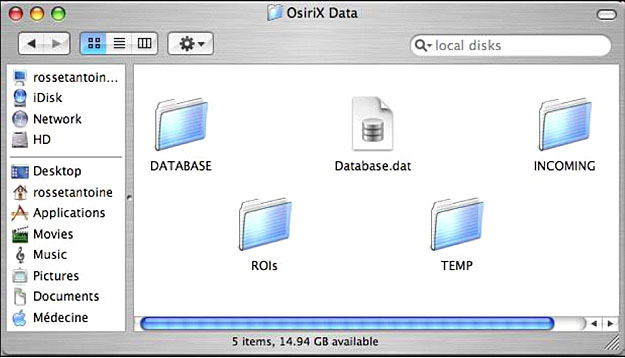Online OsiriX Documentation/Managing your local OsiriX database
Jump to navigation
Jump to search

The Preferences window.
The “OsiriX Data” folder:
Two things are important to understand about your local database:
- If you receive your images with the DICOM listener, they are stored in the “DATABASE” folder in the “OsiriX Data” folder, located in your “Documents” folder. OsiriX will manage these files. This means that if you delete them from the “Local Database” window, Osirix will definitively delete these files.
- If you import your files with the “Import” button or menu item, OsiriX can either keep a link to these files or copy them in the “DATABASE” folder. This means that if you delete them from the “Local Database” window, OsiriX will either delete the links to files or delete files located in the “DATABASE” folder.
OsiriX keeps information of all images in the “DATA.DAT” file. This file is located in the “OsiriX Data” folder.
This file can be deleted. It does not contain any important data, only links to DICOM files.
You can also rebuild the database at any time. This will delete the “DATA.DAT” file and reconstruct a new one. Simply select Rebuild Database from the File menu. This function will re-scan all files displayed in the “Local Database” window, remove all unavailable files and add all files available in the “DATABASE” folder (received from the PACS network).
You can modify the database management in the Preferences window.

The Preferences window.

The “OsiriX Data” folder:
- “DATABASE” folder contains ‘local’ DICOM files.
- “INCOMING” folder contains temporarily files that are received by the listener.
- “TEMP” folder contains files during conversion time. This folder is deleted when you exit OsiriX.
- “ROIs” folder stores ROIs of DICOM images.